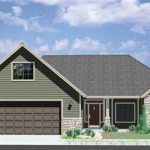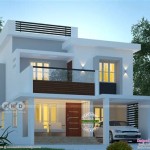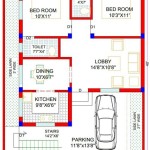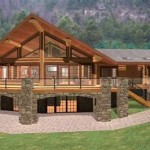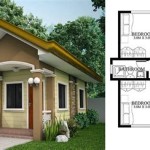Single Wide Manufactured Home Floor Plans: Maximizing Space and Comfort
Single wide manufactured homes represent a viable and increasingly popular option for individuals and families seeking affordable and efficient housing. These homes, typically 14 to 18 feet wide and up to 90 feet long, offer a range of floor plan options designed to maximize living space within a compact footprint. Understanding the various floor plan layouts and features available is crucial for prospective buyers to select a home that meets their specific needs and lifestyle.
Careful consideration should be given to factors such as the number of bedrooms and bathrooms, the layout of the kitchen and living areas, and the incorporation of storage solutions. Single wide homes have evolved significantly in recent years, with manufacturers incorporating innovative design elements and energy-efficient features to enhance comfort and livability. These improvements have made single wides an attractive alternative to traditional site-built homes, particularly for first-time homebuyers, retirees, and those seeking to downsize their living space.
Selecting the right floor plan is paramount to ensuring a comfortable and functional living environment. The following sections will explore key considerations when choosing a single wide manufactured home floor plan, highlighting common layouts, design features, and strategies for maximizing space utilization.
Analyzing Common Single Wide Floor Plan Layouts
Single wide manufactured homes offer several common floor plan layouts, each designed to optimize space in a narrow rectangular format. Understanding the characteristics of each layout can help prospective buyers identify the option that best suits their needs and lifestyle.
One of the most prevalent layouts is the "end kitchen" plan. In this configuration, the kitchen is located at one end of the home, typically adjacent to the living area. This design often maximizes counter space and allows for an open flow between the kitchen and the common areas. The bedrooms are generally located at the opposite end of the home, providing a degree of separation and privacy.
Another common layout is the "center kitchen" plan. As the name suggests, the kitchen is situated in the middle of the home, often serving as a central hub connecting the living and sleeping areas. This design can be efficient in terms of space utilization but may require careful planning to ensure adequate traffic flow and separation of functions. Center kitchen layouts can also incorporate an island or peninsula to provide additional counter space and seating.
A variation on the end kitchen plan is the "rear living room" layout. In this design, the living room is located at the back of the home, often with large windows to maximize natural light and views. The bedrooms are typically situated towards the front of the home, providing a quieter and more private space. This layout can be particularly appealing for those who prioritize relaxation and entertainment in their living space.
In addition to these common layouts, some manufacturers offer more customized floor plan options with various configurations of bedrooms, bathrooms, and living areas. It is important to carefully review the specifications and dimensions of each floor plan to ensure it meets the specific needs of the occupants.
Regardless of the chosen layout, effective space planning is essential in a single wide home. This involves carefully considering the placement of furniture, appliances, and storage solutions to maximize functionality and minimize clutter. The use of multi-functional furniture, such as sleeper sofas and storage ottomans, can be particularly helpful in optimizing space in a small home.
Key Considerations for Selecting a Single Wide Floor Plan
Beyond the basic layout, several key considerations should influence the selection of a single wide manufactured home floor plan. These factors include the number of occupants, the intended use of the home, and the personal preferences of the buyer.
The number of bedrooms and bathrooms is a fundamental consideration. A single individual or couple may find a one-bedroom, one-bathroom plan sufficient, while a family with children will likely require at least two or three bedrooms and two bathrooms. It is important to consider not only the current needs but also the potential future needs of the occupants.
The layout of the kitchen and dining areas is another crucial factor. Individuals who enjoy cooking and entertaining may prioritize a larger kitchen with ample counter space and storage. Others may prefer a more compact and efficient kitchen with a separate dining area. The placement of appliances, such as the refrigerator, stove, and dishwasher, should also be carefully considered to ensure a functional and ergonomic workspace.
The living area should be designed to accommodate the needs of the occupants for relaxation, entertainment, and social interaction. The size and shape of the living room will influence the placement of furniture and the overall flow of the space. Consider the amount of natural light, the location of windows and doors, and the potential for incorporating a fireplace or other focal point.
Storage is often a limiting factor in single wide homes, so it is important to prioritize floor plans that incorporate adequate storage solutions. This may include closets, cabinets, shelves, and built-in storage units. Consider the potential for adding additional storage in unconventional spaces, such as under the stairs or in the attic. The use of vertical storage solutions, such as tall bookshelves and wall-mounted cabinets, can also help to maximize space utilization.
Accessibility is another important consideration, particularly for individuals with mobility limitations. Look for floor plans that offer wider doorways, accessible bathrooms, and ramps or other features to facilitate access. Universal design principles can be incorporated to make the home more accessible and adaptable to the changing needs of the occupants.
Energy efficiency is an increasingly important factor in home selection. Single wide manufactured homes are subject to federal energy efficiency standards, but some manufacturers offer options for upgrading insulation, windows, and appliances to further reduce energy consumption and lower utility bills. Consider features such as Energy Star-rated appliances, low-E windows, and high-efficiency heating and cooling systems.
Finally, consider the overall aesthetics and design of the home. Single wide homes are available in a variety of styles, from traditional to contemporary. Choose a floor plan and design that reflects your personal taste and complements the surrounding environment. Pay attention to details such as the flooring, wall finishes, and lighting fixtures to create a cohesive and aesthetically pleasing living space.
Strategies for Maximizing Space in a Single Wide Home
Due to their compact nature, maximizing space in a single wide manufactured home requires careful planning and creative design solutions. The following strategies can help to optimize the use of available space and create a more comfortable and functional living environment.
One of the most effective strategies is to declutter and minimize possessions. This involves getting rid of items that are no longer needed or used, and organizing the remaining items in an efficient and accessible manner. Consider donating or selling unwanted items to free up valuable space. Regularly decluttering can prevent the accumulation of clutter and maintain a more organized living environment.
Another useful strategy is to utilize vertical space. This involves using tall bookshelves, wall-mounted cabinets, and other vertical storage solutions to maximize storage capacity without taking up valuable floor space. Consider installing shelves above doorways or in unused corners to create additional storage areas. Vertical storage can also be used to display decorative items and add visual interest to the home.
Multi-functional furniture can be a valuable asset in a single wide home. Consider using a sleeper sofa in the living room to provide guest accommodations, or a storage ottoman to provide seating and storage space. Drop-leaf tables can be used to create a dining area that can be easily expanded or contracted as needed. Multi-functional furniture can help to optimize space utilization and reduce clutter.
The use of mirrors can create the illusion of more space and light. Hang large mirrors on walls to reflect light and make the room appear larger. Consider using mirrored closet doors or mirrored furniture to further enhance the sense of spaciousness. Mirrors are an inexpensive and effective way to visually expand a small space.
Proper lighting can also significantly impact the perception of space. Use a combination of natural and artificial light to brighten the room and create a more inviting atmosphere. Maximize natural light by keeping windows clean and unblocked. Use light-colored paint on walls and ceilings to reflect light and make the room appear larger. Consider using recessed lighting or track lighting to provide ample illumination without taking up valuable space.
Organizing and storing items effectively is crucial in a single wide home. Use storage containers, baskets, and bins to organize items in closets, cabinets, and shelves. Label containers clearly to make it easy to find what you need. Consider using under-bed storage containers to store seasonal clothing or extra linens. Effective organization can help to prevent clutter and maximize space utilization.
Finally, consider customizing the floor plan to better suit your needs. Some manufacturers offer options for modifying the layout of the home to create a more functional and efficient space. This may involve moving walls, adding or removing closets, or reconfiguring the kitchen or bathroom. Customizing the floor plan can be a significant investment, but it can also result in a home that is perfectly tailored to your lifestyle and preferences.

Single Wide Mobile Home Floor Plans Factory Select Homes

Single Wide Mobile Home Floor Plans The Az

Single Wide Mobile Homes Factory Expo Home Centers

Single Wide Mobile Homes Factory Expo Home Centers

Broaddus 16 0 X 50 667 Sqft Mobile Home Champion Homes Center

Single Wide Mobile Home Floor Plans Factory Select Homes

Lovely Single Wide Mobile Home Floor Plans 2 Bedroom New Desi In 2024 Homes

Single Wide Mobile Homes Champion Center

Sequoia 12 0 X 48 560 Sqft Home Mobile Homes On Main

Mobile Home Floor Plans Single Wide Homes House



